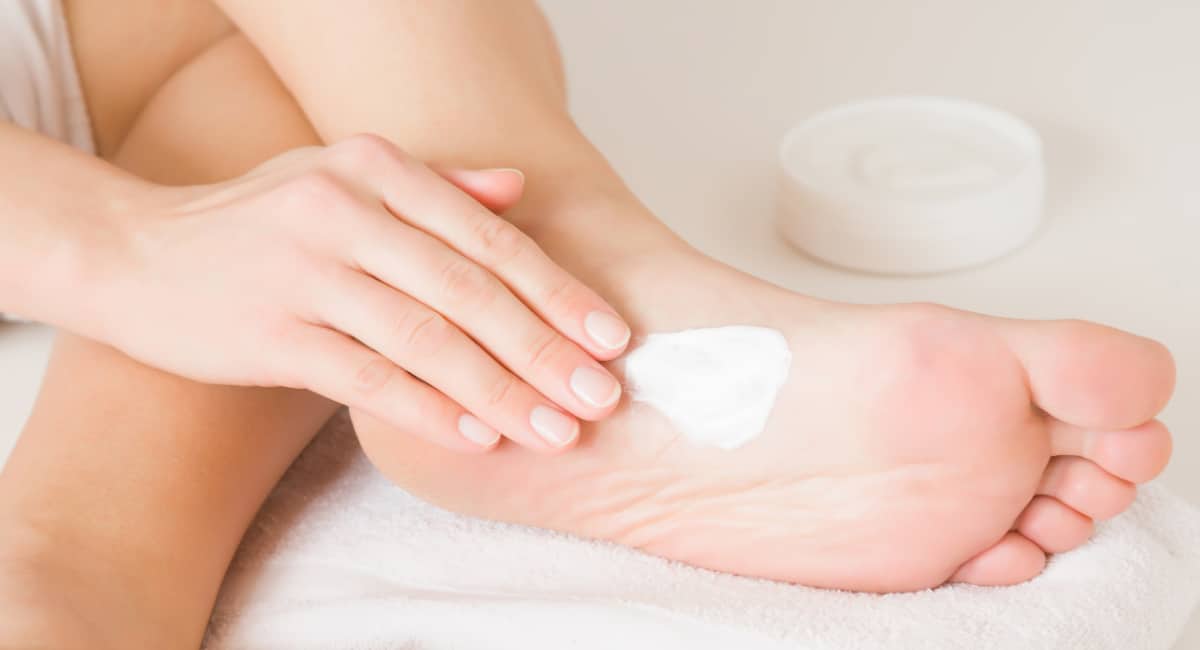Why Diabetic Foot Care Is Commitment
November is Diabetes Awareness Month, but anyone who lives with this condition knows awareness is an everyday necessity.
The effects of diabetes on the body can demand changes to people’s lives on a daily basis. Changes to diet. Changes to routine. So many things must be viewed through the lens of diabetic maintenance.
And, while it may not always be the first factor considered, diabetic foot care is crucial.
Our feet are in a particularly precarious position when it comes to the complications of diabetes. If you have been diagnosed with this disease, then the sooner you begin to focus on proactive foot care, the better!

What Makes Diabetes Dangerous to the Feet?
Our feet are already on the “front lines” of our body. They’re the first things that contact the ground when we walk, and they spend day after day supporting our weight.
Diabetes can make an already challenging job more difficult by interfering with the ways our feet sense injuries and recover from harm.
First, diabetes interferes with circulation throughout the body by blocking and damaging our blood vessels.
The feet already have a tougher time receiving a strong blood flow than just about every other part of the body, considering they are the farthest from the heart. This is why your feet may tend to get cold so easily.
Restricting blood flow further means the feet receive even fewer nutrients and growth factors when they need them. Such materials are necessary for repairing cuts and wounds that appear on the feet, meaning they can take longer to heal or—in more severe cases—not heal at all without medical support.
Second, diabetes can damage and interfere with our nerves. You may hear this referred to as neuropathy.
As nerves become damaged and die in the feet, it can cause a range of sensations from tingling to burning to sharp “electrical” pain. However, a particularly troublesome consequence is feeling no sensation at all—complete numbness.
As sensation is lost in the feet, the ability to feel damage also decreases. This means an injury can go unnoticed—and that is a very risky situation.
If your feet have trouble healing, and you’re not aware they have an injury, you may continue walking on that injury and making it progressively worse. A simple cut could open into a sore or ulcer, which has a good chance of becoming infected.
Amputation is a very real possibility if wounds and infections are left without proper care, but even smaller injuries can interfere with your overall comfort and mobility. By taking a preventative approach to diabetic foot care, many of these situations can be easily avoided.
What Does Diabetic Foot Care Look Like?
Fortunately, taking care of your feet with diabetes is not a complicated task. It just takes a bit of time, some forethought, and sometimes some special items.
One of the most important measures you can take is inspecting your feet every day for signs of trouble.
It’s important to start daily inspections now, even if you believe your feet can feel everything just fine. They very well may, but diabetes has a way of gradually dialing down sensation until you don’t even realize things aren’t registering. Getting into the habit of inspecting now means you will still be doing it when the risks are higher.
Choose a convenient, consistent time every day to look over your feet. Getting out of the shower or hopping into bed are common instances.
Use both your eyes and your hands to inspect your feet, searching for any abnormalities such as:
- Cuts
- Sores
- Discolorations in skin or toenails
- Ingrown toenails
- Corns or calluses
If you find something, let us know! We may tell you to keep an eye on things for a few days to see if it starts clearing up. However, depending on the situation, we may request you come in for a closer examination. Either way, having this record can help us determine more effective treatments for your feet in the future.
In addition to daily diabetic foot inspections, it pays to proactively treat yourself in other ways. This involves:
- Managing your diabetes in general, by tracking your blood sugar well, maintaining a healthy diet, and exercising.
- Wearing diabetic shoes and socks. It only makes sense that the items you wear on your feet should be as protective as possible. Diabetic shoes and socks come in a variety of styles, but all are designed to reduce irritation and pressure against the feet as much as possible, reducing “hot spots” that can produce sores.
- Addressing general problems early. This includes simply keeping your feet clean daily, but also includes moisturizing and addressing skin problems that arise. In some cases, treatment may depend on the severity and circumstances surrounding the problem.

Have a Trusted Podiatrist on Your Team
While there is plenty you can do on your own for diabetic foot care, having periodic professional check-ups can help you identify problems you may have overlooked or may not even realize are developing. Getting these cases handled quickly and effectively will help ensure lasting comfort and mobility well into the future.
At Comprehensive Foot Centers, we are here for our diabetic patients. Not only will we help with preventative treatment, but we will be sure to get you in for direct treatment as soon as possible, whenever needed. The health of your feet is not something to take lightly!
If you have concerns or questions about diabetic foot care, please don’t hesitate to schedule an appointment at any of our six locations in Missouri and Kansas. Call us at (816) 455-1155 or fill out our online contact form to have a member of our staff reach out to you.
